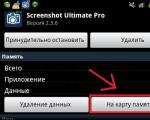Roll-up TVs. Buy a TV and roll it up: LG plans to start selling flexible TVs next year. LED - super thin novelty
LG USA Home Appliances and Electronics / YouTube
LG unveiled a mass-produced self-rolling flexible screen TV at CES 2019. When folded, the TV is a small cabinet, in which, in addition to the folded screen, there are speakers and other components. TV sales will begin in the spring of 2019, but its price is still unknown, according to The Verge.
Many of today's display devices are increasingly using organic light-emitting diode (OLED) displays. Their main advantages over liquid crystal or other screens relate to image quality - as a rule, they have higher brightness and contrast. However, OLED technology has another advantage that manufacturers have only recently begun to use in commercial products. The fact is that flexible polymer substrates can be used in OLED matrices, which makes it possible to make the entire screen flexible.
Over the past years, manufacturers have already mass-produced devices with flexible screens, such as smartphones and TVs, but in them the flexible screen was statically curved and fixed in this position at the production stage. But until recently, this technology was not used in the form of freely bending screens due to the insufficiently large resource for repeated bending. To date, several manufacturers have managed to significantly improve the durability of flexible screens, so they began to introduce mass-produced devices using this technology.
LG chose to use a flexible screen to create the Signature OLED TV R, which has a large screen size that's great for watching movies without taking up a lot of space when not in use. When folded, it is a small case, similar to a column. In its upper part there is a hole closed by a lid that slides to the side. If the user wants to watch TV, a flexible 65-inch OLED panel pops out of this hole.
A multi-segment mechanism is fixed on the back surface of the OLED panel, preventing it from bending in reverse side, as well as two two-section metal rails holding the panel in a vertical position. It takes about ten seconds to deploy the TV. In addition to the fully deployed state, the TV can be used in another mode, in which it is rotated by about a quarter and displays an interface for controlling music and devices on its screen. smart home. It is worth noting that the TV is based on a prototype presented at last year's CES 2018, but now it is a serial device.
LG does not reveal all the technical details about the device, but some details are known. Like the company's other smart TVs, it runs operating system webOS. The TV supports two voice assistant - Google Assistant and Amazon Alexa. In addition, the company for the first time added support for Apple AirPlay 2 technology to this device, which allows you to play music and video from Apple devices.
The TV has a 100-watt speaker with Dolby Atmos technology, LG's own second-generation Alpha 9 processor, and four HDMI 2.1 ports. While the company does not disclose all the details about the device, for example, the resource of the foldable screen. In addition, the price of the device is still unknown. It is expected that its sales will begin in March 2019.
Other manufacturers have also begun to introduce flexible screen technology into mass-produced devices, not TVs, but smartphones. For example, in November, the American company Royole first mass-produced smartphone with a screen that folds in half, and Samsung pre-production prototype of a smartphone with two screens, one of which also folds in half. A commercially available device based on this prototype is expected to go on sale in 2019. Except himself Samsung devices also announced that it helped Google add support for folding screens to Android, thanks to which the system and application interface will automatically adapt to the state of the screen.
Grigory Kopiev
01/09/2019, Wed, 13:33, Moscow time , Text: Elyas Kasmi
LG has created a unique TV with a screen that can be rolled up and thus occupy a minimum of space in the room. Samsung and other TV market leaders are not yet ready to announce such solutions.Scroll TV
LG has announced its latest Signature OLED TV R, the world's first TV with a truly flexible screen that can roll up like paper. The premiere took place in Las Vegas (USA) as part of the international exhibition consumer electronics CES 2019. The dates for the start of deliveries of the TV and its retail price were also announced there.
The Signature OLED TV R was first shown to the public exactly a year ago at CES 2018. At that time, LG showed only its prototype with a set of basic features, while now we are talking about a device completely ready for serial production.
Release date and cost
In a bid to be the first to market a rollable TV for home use, LG intends to begin distributing the Signature OLED TV R in 2019. A specific launch date has yet to be announced.
However, the cost of the Signature OLED TV R has already been set: in the first days of sales, it will be possible to purchase a “roll” TV for $10,000. The model is presented only in a modification with a 65-inch diagonal screen. Plans for the release of more compact or, conversely, even larger models, LG has not yet shared.
Design concept
When creating the Signature OLED TV R, LG initially abandoned the idea of a compact TV that could be rolled up by hand. Even at the prototype stage, the TV acquired a weighty base, containing, in addition to a niche for a twisted screen, also a folding mechanism. Therefore, Signature OLED TV R cannot be hung on a wall - only placement on any horizontal surface is available.
LG Signature OLED TV R Fully Expanded
Over the course of the year, LG has redesigned the base of the Signature OLED TV R first, with built-in acoustics and an improved screen unrolling mechanism. Now it takes exactly 10 seconds to fully open the panel, and users have the opportunity to raise the panel by a third. In this mode, the screen displays the time, date and icons for managing smart home devices, including smart speakers.
Specifications and voice control
The main component of the Signature OLED TV R is LG's own OLED panel. It is located on a special polymer substrate, which gives the whole structure elasticity, and has a diagonal of 65 inches. Display supports a high resolution Ultra HD or 4K, and it comes with HDR support and a 120Hz refresh rate. Viewing angles reach 178 degrees vertically and horizontally.
LG Signature OLED TV R with a third-fold screen
The panel with the screen is devoid of any connectors - all wired interfaces, including the HDMI 2.1 input for the image source, are placed on the back of the base. The use of the HDMI 2.1 standard here is a reserve for the future. This standard supports the transfer of content in 8K resolution, which will allow you to watch it on this TV without having to purchase a new model. The TV is also capable of playing content from external media connected via USB 3.0 (the interface is backward compatible with USB 2.0).
Dolby Atmos acoustics with a total power of 100 watts are responsible for the sound output in the Signature OLED TV R. The manufacturer does not specify the number of speakers included in the system. The software component of the TV is represented by the webOS system in its most current version. The firmware contains a wide range of built-in applications and supports voice control thanks to the integrated Google Assistant. In 2018, Assistant, we recall, developed support for the Russian language, which automatically means full support voice commands given on the great and mighty.
Owners mobile devices Apple company LG has prepared support for AirPlay 2 technology - with its help, you can easily display content from iOS gadgets on your TV and, in particular, duplicate the image of their display on the large Signature OLED TV R screen. In one of the next webOS updates, LG promises to add support for an assistant Amazon Alexa.
Competitors and Legacy Signature OLED TV R
Roll-up TVs as of early 2019 not featured in model range not a single manufacturer, so the brainchild of LG in terms of concept has no competitors yet. On the other hand, the Signature OLED TV R is a designer TV designed to appearance decorate the interior of the living room or bedroom. In this regard, he already has direct rivals: this Samsung TVs series The Frame, outwardly resembling paintings and in the off state showing the works of great artists. However, such TVs do not know how to roll up.
Samsung The Frame is a designer TV that imitates a picture hanging on the wall
As far as the Signature OLED TV R legacy goes, LG is set to introduce a rollable smartphone for the foreseeable future, in late 2018. Unlike a TV, the smartphone's screen has two twist mechanisms for easy use with both hands, and it also has the ability to partially unfold display.
Last time we talked about two main types of TVs: kinescope and liquid crystal. We dwelled in detail on the pros and cons of each of the types, and also informed readers about which Novosibirsk stores offer the most favorable prices. However, the world of TVs is not limited to just two types. And so we continue our educational program. Denis Plotnikov, a specialist in the TV department of one of the large Novosibirsk stores, helps us understand the nuances.
That plasma...
Although CRT TVs today they are still found on store shelves, but the townspeople are much more interested in liquid crystal and plasma models. Why? Better image quality, brighter colors... But what is the so-called plasma? Let's figure it out.
Advantages:"+" TVs with a large screen diagonal (from 37 to 63 inches) are cheaper than LCD counterparts
The "+" lines on a plasma screen are not as clear as those on an LCD. And this is less tiring for the viewer's eye during prolonged viewing.
Flaws:"-" in case of a long playback of a static picture, the screen dims and loses brightness
"-" color reproduction is worse than LCD
"-" the screen of cheaper models glares if external lighting (computer light, lamp, sun, etc.)
“-” plasma TVs with a small screen diagonal do not exist in nature, so get ready to pay at least 20 thousand rubles for such a TV, or even more
Important!
When a static image is displayed for a long time, the TV screen becomes dim. Even those who seem to constantly watch movies and do not leave the image on pause for a long time can face such a problem. The fact is that many television channels use bright logos that “hang” in the corner of the screen. If you watch the same channel for a long time, then its logo may simply forever be imprinted on your TV screen.
LED - super thin novelty
Recently, the market has replenished with TVs with an LED backlight system. In fact, these are the same LCD TVs, only with an improved design.
Advantages: "+" colors on the screen are brighter and more saturated, black and white are closest to the real
"+" is the world's thinnest TVs. There are even models that can be rolled up into a tube. True, they are very expensive, so they have not yet been launched into wide production.
Flaws:"-" the price of such TVs is very high. Compared to plasma and LCD counterparts, an LED TV costs one and a half times more.
It is important to remember that the thinner the TV, the worse quality Images. This is due to the fact that in thin models, the backlight lamps are located only at the edges of the screen. In more "thick" models, the backlight lamps are located around the entire perimeter of the screen.
According to Bloomberg sources, LG Electronics Inc. plans to begin mass production and sales of TVs with flexible screens. Analysts of the electronics market attribute the rush to the release of a fundamentally new TV with fierce competition, which has intensified against the backdrop of the strengthening of Chinese companies and the plans of a long-time South Korean competitor, Samsung, which is developing its own flexible displays (in particular, it intends to release a TV and a smartphone). Under the cut, a little more facts about the products with new technology that the South Korean giant plans to make consumers happy with.
What is known about the new TV
According to insiders, the diagonal of flexible new products will be 65 inches. It is noted that TVs will roll up at the touch of a button, Bloomberg draws an analogy with a garage door, a roller blind came to my mind.
TVs will be equipped with OLED screens. According to anonymous interlocutors of the edition thanks to organic light-emitting diodes, screens will be able to provide more accurate and contrast image, than traditional liquid crystal panels.
The world's first flexible transparent OLED display was demonstrated by LG in June 2017.

Another presentation took place at CES-2018. The screen (sample of 2017) had a diagonal of 77 inches and other rather impressive characteristics, in particular, a resolution of 4K Ultra HD (3840 x 2160 pixels), a transparency of 40% and a bending radius of 80 mm, which does not affect the performance of the device.
CES-2018
In 2017 - 2018, the exhibition device from LG looked like a kind of response to the registration by their compatriots from Samsung of a patent describing a flexible TV. In the coming year, we are talking about a full-fledged commercial product.
Market situation
It is known that now there is a fairly tough technological competition between traditional LCD matrices, OLED technology and the promising development of LCD, which Samsung marketers called QLED. At the same time, it is known that according to Statista, LCD TVs as a whole account for about 98% of the market, while OLED is content with a 1.1% piece of the pie, which is far from LG's global ambitions. Meanwhile, in the vast majority of authoritative forecasts, the growth potential of OLED market share is estimated to be good, with growth of 60 - 70% expected.Cheap Chinese products are rapidly conquering the market, and the efforts of the main competitor are spurring the Korean giant to release a mass-produced flexible TV as quickly as possible, which, obviously, will appear at the beginning of the year and will be shown at CES-2019. It is known that LG never bypasses this event and every year chooses CES as a platform for the presentation of new products.
Skeptical assessments indicate that for the global consumer, Chinese low prices today are much more interesting than Korean innovations. They say that the market, as it has done so many times with flashy and ambitious technologies, will ignore expensive flexible TVs long enough that LG will be able to win back only minor niche segments. As a rule, such estimates indicate that global demand for such products will only be possible if LG drops prices to the level of the plinth, i.e. make them comparable to Chinese manufacturers.
A little more about the expected flexible displays from LG
It is known that, unlike Samsung, LG does not plan to release a flexible smartphone, while Korean sources have already reported the likely release of a Lenovo tablet with a flexible screen, which is being created by LG Display division.
According to insiders, the screen size of the new tablet will be 13 inches when unfolded and 8-9 when folded. It was also reported that the device and the screens themselves will be produced in China. It is known that LG plans to offer this display to Dell, whose share in the gadget market has dipped somewhat over the past few years.
LG refuses to comment on any news and reports about flexible displays, TVs and tablets.
Outcome
Clearly, with flexible screens, LG is trying to regain its lost market leadership and popularize OLED technology, which, despite its obvious benefits, has proved expensive for consumers. On the other hand, skeptical arguments cannot be ignored, such as the likely high cost of a new product, which may turn off stingy buyers who are not willing to pay for the controversial advantage of being able to roll the screen into a tube.In my opinion, the technology certainly has a future, especially in cases where the TV needs to be transported somewhere. At a comparable cost, such TVs will be an obvious alternative to projectors, which today remain more compact. In my opinion, any technology that gives the user more freedom than a competitor's solution must win sooner or later. Maybe I'm wrong.
In any case, I will be glad to know your opinion. Participate in the survey and share your opinions in the comments, this is important for us, for the market, for manufacturers and suppliers, for the information field and for yourself.







